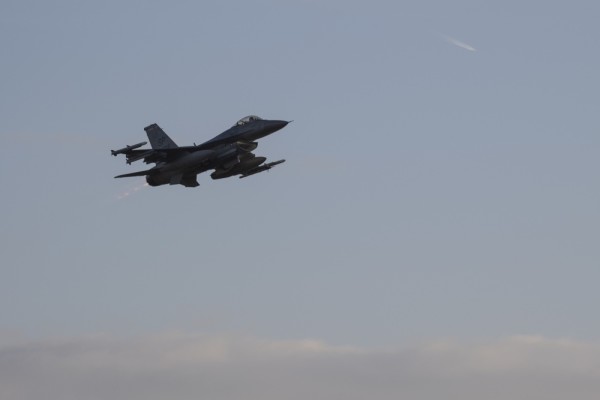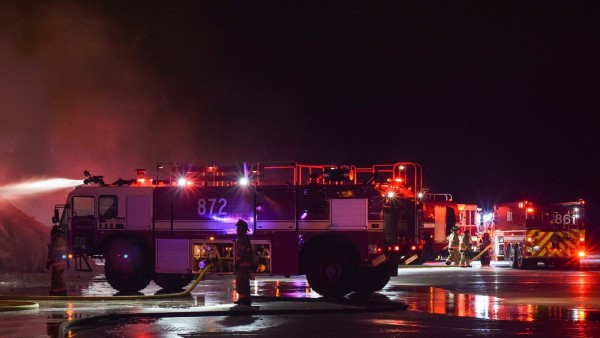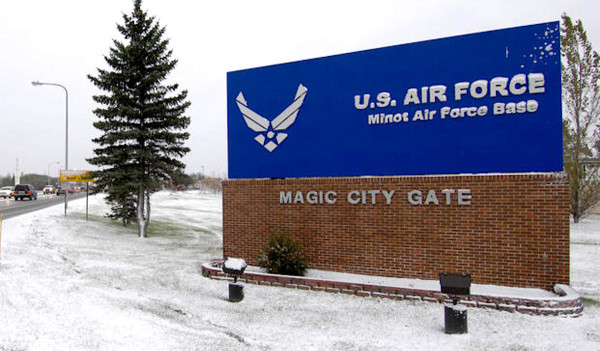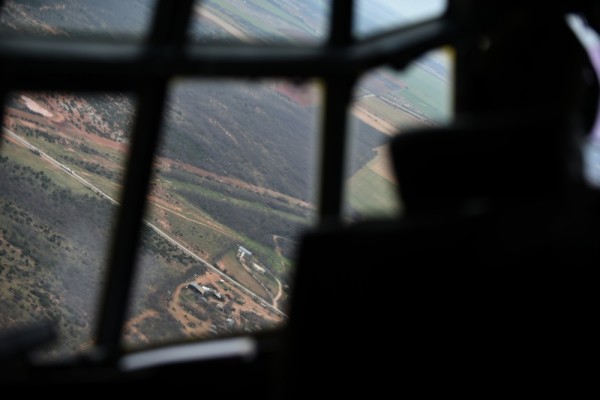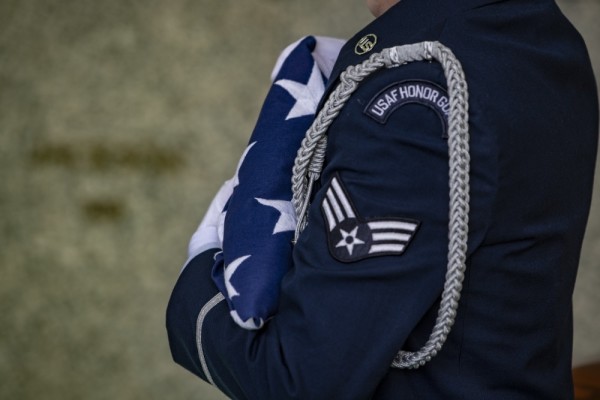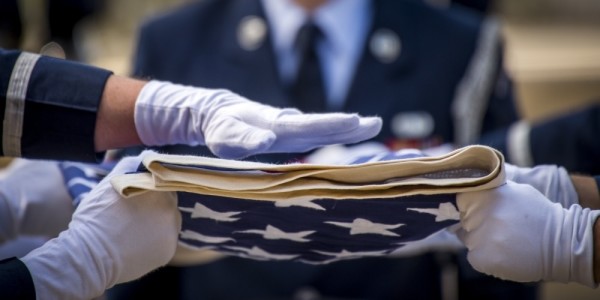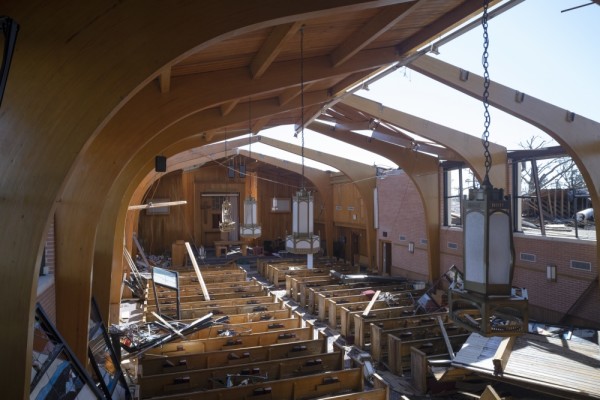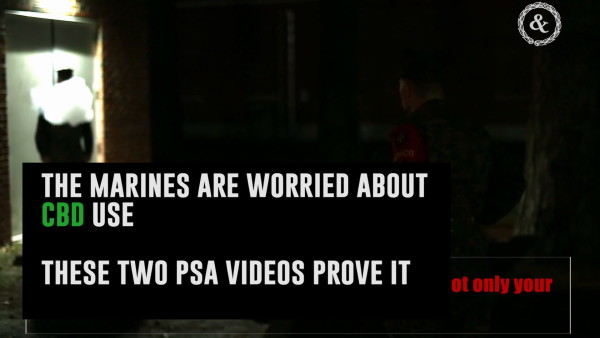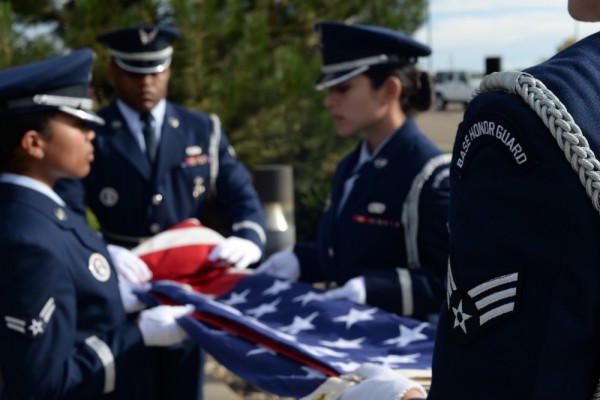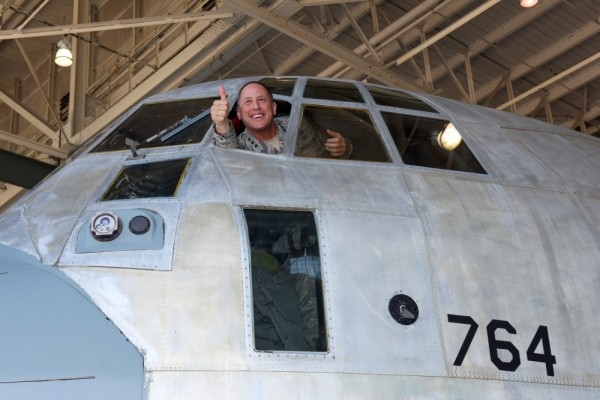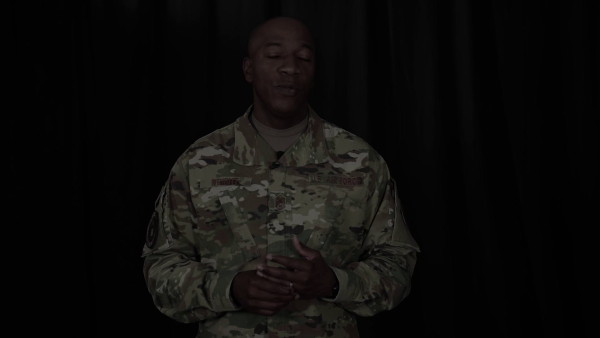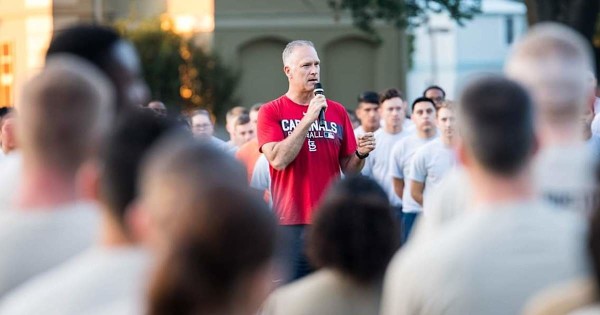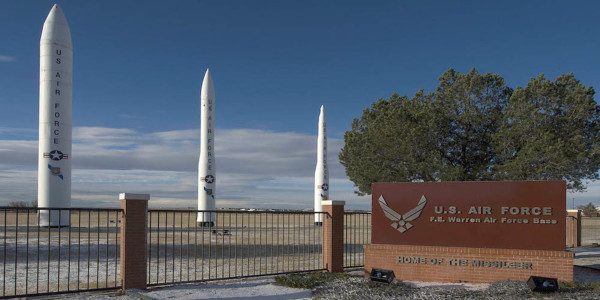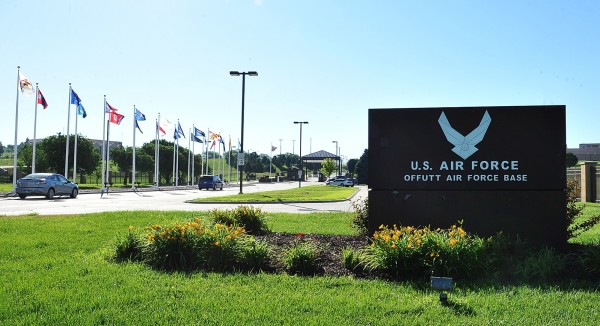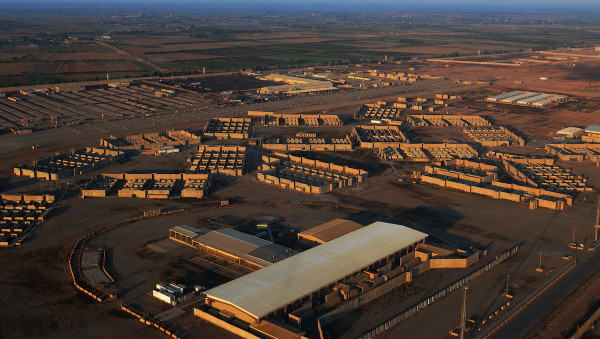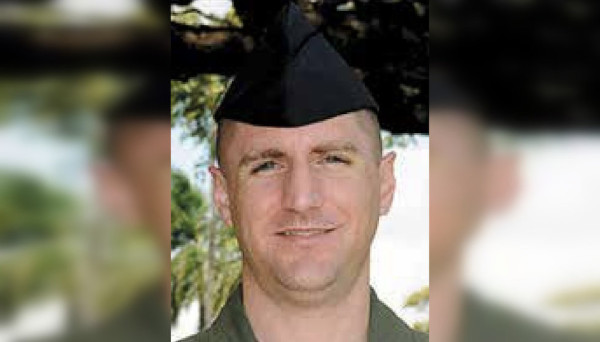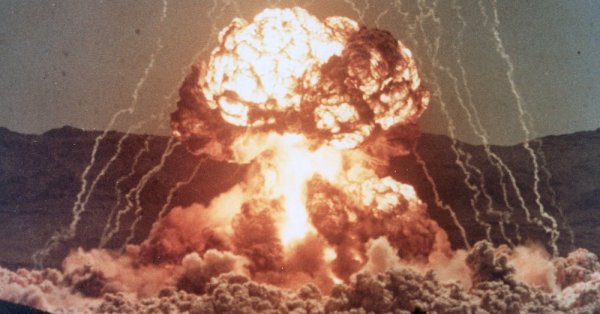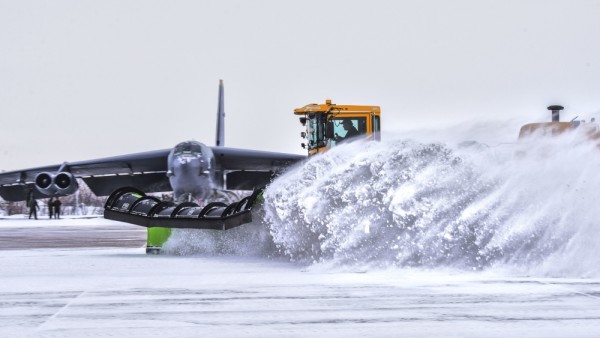Late last month, airmen who have served at Minot Air Force Base, North Dakota took to social media to air frustrations that they were overworked, mismanaged, and disrespected based on their gender.
“Minot is extremely toxic, especially certain squadrons,” wrote one person whose post was shared on the popular Facebook page Air Force amn/nco/snco, where, over the course of a week, 15 people claiming to be Minot veterans past and present wrote nine single-spaced pages’ worth of criticism of the base.
One said she was told she was “useless because I was pregnant,” while serving at the base. “If I were to stay in, there would be no guarantee that I will be alive in a year or two from now.”
When asked about the comments by Task & Purpose, a Minot official said base leadership was listening to airmen.
“Minot Air Force Base leadership at all levels are listening to and actively engaging the concerns of our airmen and families,” said Maj. Christopher J. Mesnard, chief of public affairs at Minot. “Commanders and Senior Enlisted Leaders at the wing, group and squadron levels are directly involved with our personnel in order to ensure Team Minot has the care and services available to them, to best meet individual and personal needs.”
Still, the recent complaints about Minot seemed to confirm the feeling many airmen already have about the base: that it’s one of the worst places to be stationed. A base of about 5,800 people around 40 miles south of the Canadian border, Minot consistently makes the list of not only the most unpopular Air Force bases, but also the most unpopular military bases writ large, and it’s had that reputation for years.

“When you look at Minot today, you find some of the oldest maintenance facilities in the Air Force,” retired general and former Air Force Chief of Staff Larry Welch told The Washington Post in 2014. “You find an extreme reluctance to accept an assignment to Minot.”
One anonymous airman currently stationed at Minot in a security forces squadron, the Air Force equivalent of military police, said that when he told his old instructor from basic training that he was selected for the base for his first assignment, the instructor said she also went there for her first assignment.
“She said ‘it’s horrible,’ however long ago that was,” said the anonymous airman, who went by the pseudonym Mike since he was not authorized to speak with the press.
Brandi Hoff, an Air Force and Army veteran, said Minot had the same reputation when she arrived there in 1996. Now a civilian, Hoff most recently served as the former program manager for the base’s True North program, an Air Force initiative to make mental health and other resources more accessible to airmen.
“Minot has a bad reputation, and we were trying to break that stigma, but it was an uphill battle,” Hoff said.
Many critics say that the base’s isolation and harsh winters in rural North Dakota make it an unpopular assignment for young airmen away from home for the first time. However, Hoff pointed out that other Air Force bases such as F.E. Warren, in Wyoming, and Malmstrom, in Montana, are located in similar environments but without the same level of negative stigma as Minot. Why then does Minot get a bad rep where the others don’t?
The answer, according to Hoff, goes all the way up to the halls of Congress.
‘Only numbers’
As a member of the 791st Missile Security Forces squadron, Mike is charged with protecting the Minuteman III nuclear missiles sheltered in silos across the base. Minot is enormous: its missile fields cover 8,500 square miles, which is about the size of New Jersey. It can take up 1.5 to two hours to drive to some of the missile sites, often in a dilapidated Humvee without heat.
“It’s not pleasant,” Mike said. “Last winter I was training a new airman, driving out to a site an hour away. It was negative 30 degrees that day with no heat in the Humvee, a hole in the floorboard and wind coming through the floor.”
When he contacted his leadership about the issue, they said there was nothing they could do to help, Mike recalled.
“Leadership tries their best, but it’s been how many years since they’ve done the job we’re doing?” he asked.
It’s not just the length of the drives that weigh on airmen, or the temperature. It’s the frequency. Mike said that before the COVID-19 pandemic, the Air Force was trying to do better to comply with regulations limiting continuous duty time to 12 hours. But over the past two years, that regulation has gone out the window, Mike said. He himself has often worked 13 or 14-hour shifts, and other airmen at Minot have had as little as two hours to rest between shifts.
“Regs and rules only matter to leadership when it works in their favor,” Mike said, and others whose stories were posted on Facebook agreed with him.
Leadership makes airmen “work 15+ hour shifts, then expect them to come in again the next day after only 6 hours of sleep tops, and expect them to be at the top of their game, continuously over numerous days,” wrote one poster.
“The top dogs only see [airmen] as numbers,” they added.

While sleep deprivation and fatigue are two constants of military life, a 2014 Department of Defense review of the military’s nuclear arsenal found that service members at bases hosting nuclear weapons have been stretched past their breaking point, particularly in the security forces and maintenance career fields.
“The security forces supporting the Navy and Air Force nuclear mission have experienced a constant ratcheting of requirements driven by the outcome of security exercises against highly capable and completely informed aggressor forces in high-consequence, but low-probability scenarios,” the review said. “The security forces are always on high alert, regardless of the real world threat situation, with the inevitable and logical questions about the credibility of the need for the intense daily commitment.”
That problem also extends to maintainers. Besides hosting nuclear missiles, Minot also is home to the 5th Bomber Wing, which operates nuclear-capable B-52 strategic bombers. Keeping those 60- or 70-year old aircraft ready to fly takes work, but not all of it is necessary, said one anonymous airman stationed at Minot.
“Instead of giving airmen time off, they would get sent to go pick up weeds the entire afternoon or, no bullshit, sweep rocks off the parking lot,” said the airman, who went by the pseudonym Pete since he was not authorized to speak with the press.
“I get it, you’re supposed to work, but it would get to the point where you would see [full mission capable] rates in the upper 90s month to month,” the airman said. “I’ve never seen that. Usually, if you hit 90 it’s time to take a break. You would fight for these kids to get time off after they’ve been busting their butts so hard, but that never happened here.”
Instead, they were assigned to do busy work, the airman explained. Part of the reason for the heavy work schedule was that unit leadership was stuck in outdated workflows and did not communicate why things were being done that way, the airman said.
The impression was “we aren’t going to explain to you why we are doing this,” the airman said. Constantly doing monotonous, tedious work with no direction or apparent reason was “mentally taxing,” he explained.
Posters on social media seemed to agree with the airman’s assessment. For example, one person claiming to be with the 5th Aircraft Maintenance Squadron said that “just in the past year and a half I’ve had about eight airmen just in normal conversations bring up wanting to hurt themselves,” due to “lack of time off and lack of appreciation as everyday coming into work is just another brief about how shitty we are doing.”
Being overworked and understaffed is a problem across the military, and especially among Air Force security forces and maintainers, who are widely understood as the most depressed members of the service. Data leaked to the popular Facebook page Air Force amn/nco/snco in 2020 showed a higher suicide rate among those career fields than the rest of the branch. Still, there are a number of factors that exacerbate the stress load at Minot, and it’s not just the weather.
‘Always high alert’
America’s nuclear arsenal comes in three forms: land, sea and air. Land involves ground-based intercontinental ballistic missiles, such as the Minuteman III located in silos at Minot. Sea involves Trident II D5 nuclear missiles launched from the Navy’s 14 Ohio-class ballistic missile submarines. And air involves Air Force B-52 and B-2 bombers, both of which can carry nuclear weapons.
Minot is the only base in the country that hosts two legs of the nuclear triad: ICBMs and B-52 bombers. As such, the challenges faced at other nuclear bases, such as not enough support, increased security demands, and high-alert status, are intensified, according to the 2014 report.
“It’s always high-alert,” said Brandi Hoff, the former True North program manager. “You don’t get lead time if something bad happens.”
That responsibility would be difficult in any location, but in frigid North Dakota the challenges are “unparalleled,” the 2014 report said. Weather conditions make travel to and from the ICBM facilities more difficult and time-consuming; equipment breaks faster, transport vehicles fail more frequently, and aircraft need more time for maintenance. On top of that, the base is isolated. The nearest city has about 50,000 residents, many of whom work in the oil and gas industry. The weather and isolation limit the support and infrastructure available for the base, and it also makes living there more difficult for airmen.
“There’s absolutely nothing to do” unless you’re into hunting or ice fishing, Pete said.
“I feel bad for those kids here who are 21 … when you look at it, drinking is the only thing to do downtown, it’s all bars,” he added. “You can only go to the mall so many times in a month … and six to eight months out of the year, it’s cold,” as in negative 20 degrees or more.
The isolation also makes it expensive to leave the base for a break.
“An airline ticket out is $1,000 … who can afford that? And a lot of these kids don’t come from money,” said Hoff. “It’s expensive to fly home, so people don’t get a chance to decompress, and it’s not like you can drive to a lot of places.”

Too much work, cold weather and isolation would drive anyone a little stir-crazy. But in addition, unit supervisors are often not sympathetic towards their airmen’s attempts to seek mental health help, sources said. The problem is more pronounced at Minot due to the base’s nuclear mission. Nuclear-equipped bases often have a personnel reliability program, or PRP, which is supposed to ensure that service members are mentally and physically fit to work around nuclear weapons. However, the tool has become an unrealistically high bar that makes more airmen unfit for duty than not, according to the 2014 review.
For example, “an eye appointment is reason for temporary suspension because the eye exam may include dilating the eyes creating temporary sensitivity to light,” wrote the review, which called PRP “enormously wasteful.”
The high PRP standard also leads to commanders second-guessing their subordinates’ requests to seek mental health help, as it could temporarily take them off duty. The fear is “that people who want to avoid alert or watch duty or security force operations can simply declare they are ‘stressed,’ earning them a suspension from PRP and therefore relief from difficult duties,” the report said.
While the Air Force worked to improve PRP after the 2014 review, Hoff said it’s still had a detrimental effect to airmen at Minot. Mental health help is even more discouraged in security forces because it can quickly put such airmen on ‘do not arm’ status, where they cannot bear weapons and thus cannot do their jobs. Mike, the security forces airman, knows that challenge personally. When he was off-duty for mental health help, he had repeated meetings where his leadership pressured him to declare himself fit for duty so he could arm back up. It got to the point where “I wouldn’t talk to him without a peer or a mental health representative with me,” Mike said.
The airman estimated he knew of about two dozen colleagues who had a similar experience. For example, he said one woman who asked for personal time to recover from a death in her family “was told no and that if she tried again she would be given paperwork for malingering,” he said.
“And that’s just in our squadron,” he clarified.
‘Somebody doesn’t give a shit’
Across the Air Force, staffing is so low, Hoff explained, that from her perspective 80 percent staffing has become the new 100 percent. But the percentage suffers further from additional factors like sick time, maternity leave, deployments, and people out due to PRP, for example.
“So mostly it’s just 50% of the people doing 100% of the work,” Hoff said. “We’re at a base with two thirds of the triad, so you’d think they’d be adequately manned not to do this to our people and these guys would not be pulling 12 hour shifts six days a week.”
Instead, commanders have to lean on their people to put out that much work. Commanders can’t say “we can’t protect that nuke today because someone is out sick,” Hoff said, so it’s up to Congress to provide more support and manpower, she explained.
“Somebody doesn’t give a shit about the nuclear mission or the people, and I guarantee you it’s not the mission,” Hoff said.

Some more consideration for mental health would not hurt either, said Mike. When asked what he would change first about Minot, he said he “would change how leadership treats those who go through mental help. If that were better, more people would seek help and we’d have less suicides and less attempted suicides.”
The entire military is dealing with a suicide crisis without a clear solution. At Minot, one airman died by suicide this past New Year’s Eve, and another took their own life later in January. One common complaint across many of the stories posted on Facebook was a lack of basewide conversation about mental health in the wake of those deaths.
“It seemed to all of us like leadership was just trying to sweep it under the rug,” said Mike. “There was no talk about mental health or anything. The only time we talk about mental health awareness is when it’s mandated by the military, and even then we just do PT or ruck marches.”
Even if there were less of a stigma surrounding mental health, it would be a challenge to find enough mental health care providers to match the need. Hoff said that her providers at True North were swamped, especially as the program became more popular at Minot. Mike was one participant at True North, and while he gained a lot from the program, he could only meet with his provider once a month due to the large number of airmen seeking help.
“They didn’t have enough technicians to help,” he said.
‘Never had better’
Not everyone had a negative view of their time at Minot. Search for “Minot” on any social media forum such as the unofficial Air Force subreddit and you will find both people who enjoyed their time at the base as well as people who could not wait to leave. Even among the 15 people whose stories were posted to Air Force amn/nco/snco, there was one who enjoyed their time at the base.
“I have never had better leadership at the group and squadron level … they make sure you have PTO and family days when you’re not in the field,” said one purported former member of the 91st Security Forces Group. “Leadership visits often during trips out. They have a whole group of NCOs and officers dedicated to defender culture. They do not treat members who are down with pity or disrespect.”
Another member of the 791st security forces squadron told Task & Purpose that in many ways, Minot is better than the previous bases she’s served at. There are long hours and tough physical labor, she said, but many younger airmen can’t handle it because they are more entitled than their predecessors.
“We know at one point we’re going to leave, and everywhere you go the grass is not always greener,” she said.
The airman acknowledged that there are no doubt some “bad apples” in each unit, as there are in all units, but that’s not enough to judge the entire unit. Still, she empathized with some of the Facebook writers who said they were bullied or ostracized because they were women or because they were pregnant.
“I’ve been in that position: pregnant and people don’t care about me,” she said. Like many parents across the military, she wished Minot had free child care, because child care costs there are nearly unaffordable, she said.
No matter what the future holds for Minot, Hoff hopes someone gets more bodies on that base.
“80% does not hack it,” she said. “Not at a two-thirds nuclear triad base.”
Correction: An earlier version of this story misstated the time it takes to drive to missile sites at Minot.
What’s hot on Task & Purpose
- A Marine was asked ‘how many people have you killed?’ His response was perfect
- Abandoned Air Force base with underground tunnels posted for sale on Facebook
- Air Force maintainers are getting new ‘janitor grey’ coveralls
- The Marine Corps is officially flying its ‘most powerful’ helicopter ever
- ‘Sidewalk,’ ‘Terminally Stupid,’ and ‘Meatloaf’ — How military pilots get their call signs
Want to write for Task & Purpose? Click here. Or check out the latest stories on our homepage.


